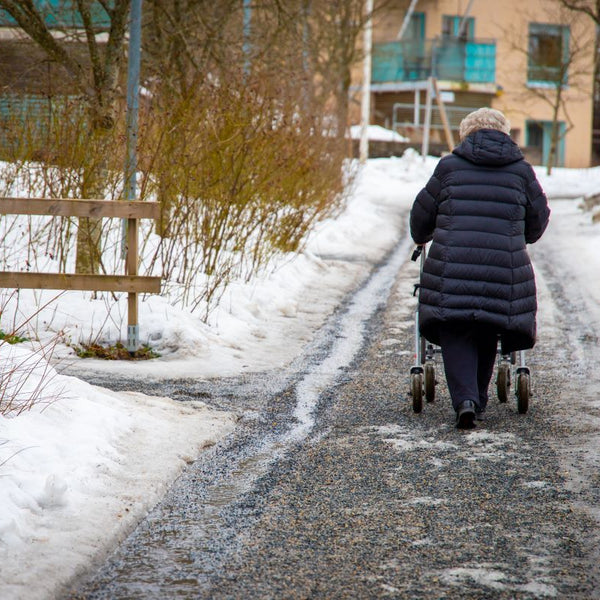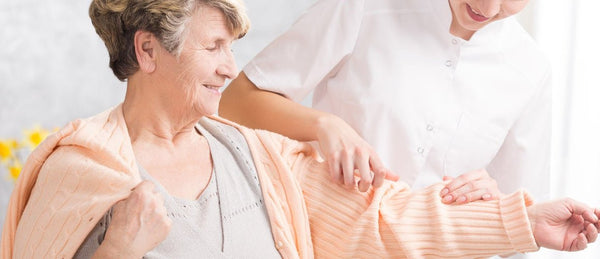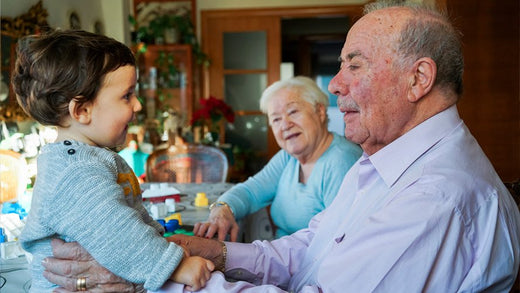Experiencing a fall can be a traumatic experience. Unfortunately, it’s an experience that many of us will go through in later life. In fact, around one in three over-65s in the UK experience a fall at least once a year; a figure that increases to around 50% in the over 80s.
Falls are the second most common reason for an ambulance call out in Wales, with similar figures across the UK.
Falls Forum with James Gough from Welsh Ambulance Service [1]
But not all people experience a fall in the same way. Although falling is common, having a really terrible experience and suffering from related complications can be avoided.
Many people who fall do not suffer any serious injuries. However, if they are unable to call for help or get themselves off the floor, or if loved ones who are with them are unable to help raise them, they may have no choice but to wait for an ambulance crew. Considering that the national standard for ambulance trusts attending non-urgent calls is 3 hours, that wait may be a while.
Are you at risk of a fall?
Complete our 2-minute assessment to calculate your falls risk score. You will also receive our free Falls Prevention Guide for advice on avoiding falls and how to keep your loved ones safe at home
Complications related to long-lies
What is a long lie? A long lie is usually defined as a person spending more than an hour on the floor because they cannot get up [2].
In a study by Fleming and Brayne that followed a group of elderly people in Cambridge, 80% of people who fell were unable to get up without help on at least one occasion. Around a third of those were on the floor for over an hour.
The same study showed that lying on the floor for a prolonged period after a fall was associated with repeated falls, fall induced injuries, and subsequent admissions to hospital and long-term care.
Some of the nasty complications associated with long lies include pressure sores, carpet burns, dehydration, hypothermia, pneumonia and rhabdomylosis (acute kidney failure).
In fact, a fifth of elderly people who are admitted to hospital after they have had a non-injury fall will have been left on the floor for more than an hour. And of those, half will die within six months from related complications (Velas et al, 1997).
So, although it may be likely that you or a loved one will experience a fall in later life, the key to reducing the impact of the fall is to avoid a long lie.
So, how can you help yourself or lift an elderly person who has fallen?
First of all, it’s essential for anyone who is likely to experience a fall to be able to call for help. This is crucial in avoiding a long lie.
An elderly fall alarm will automatically alert a 24-hour monitoring centre who can call friends, family or the emergency services. These devices can be worn as a neck pendant or on the wrist like a watch. They have a fall sensor and use a clever fall detection algorithm that detects when the wearer has fallen.

Fall alarms
Although a fall alarm cannot prevent a fall, they can potentially save lives and reduce distress by automatically calling for help when a fall is detected or the emergency button is pressed.
Attending to a person who has fallen
Once you have been alerted to the fact that someone has fallen, you have three options:
- Call an ambulance.
- Help them to get themselves back on their feet using manual techniques.
- Lift them with a mechanical device, such as the Raizer M Manual Lifting Chair.
However, if the person is uninjured, it may take the ambulance service a long while to attend, increasing the risk of the fallen person suffering the complications associated with long lies.
You should never try to ‘haul’ a fallen person up off the floor, as you risk causing harm to both of you.
And while there are recognised techniques that you can use to encourage and guide a person back to their feet, it does require physical effort on the part of the fallen person, which in many cases is unrealistic.
Therefore, the quickest way of getting an uninjured fallen person up off the floor is often to use an emergency lifting tool.

Using mechanical lifting tools to help get someone up from the floor
Emergency lifting tools take the shape of a classic dining room chair when assembled and fully raised. To lift a person using the Raizer M, you simply assemble the Raizer M’s 9 different parts around the fallen person while they’re still on the floor. The parts comprise of four chair legs, a seat, two backrest pieces, a seatbelt and a crank handle. The parts are labelled and click into place, so it’s easy to assemble.
Once all the parts are in place, you turn the crank handle to begin the lift. This prompts the chair legs (which are flat against the floor at the beginning of the operation) to push down against the floor in order to raise themselves.
As the chair legs rise, the rest of the chair rises too, along with the person who is resting on the seat and the backrest.
The Raizer M is geared so that turning the crank is manageable for almost anyone. When you stop turning the crank, the Raizer M will stop and lock still in that position. This means you can pause as many times as you like during the lift for a breather, to reassure the fallen person, or even get them a cuppa.
Including assembly, it takes around five minutes to lift the chair fully. At the end of the operation, the person will be in a comfortable, high seated position. They can then stay seated in the chair for as long as they like, and the high position makes it easy for them to stand when they feel ready.

Lifting chairs
Get more information on the Raizer M, including a video of the chair in action.
What are the main benefits of using emergency lifting aids?
With an emergency lifting aid such as the Raizer M Manual Lifting Chair, it takes just one pair of hands to lift a fallen person from the floor. This means the power to get your loved one back on their feet again as quickly as possible, avoiding a traumatic wait for an ambulance, as well as the knock-on effects that long lies can cause.
And although falling is never nice, getting your loved one up quickly and with minimal fuss can help avoid the subtler costs of a fall, such as a loss in confidence. We know that people who lose confidence at home usually move around less due to fear of falling. This leads to a loss in muscle strength, which in turn makes further falls more likely.
For friends and family, having a safe and easy way of raising loved ones from the floor, can mean real peace of mind.





